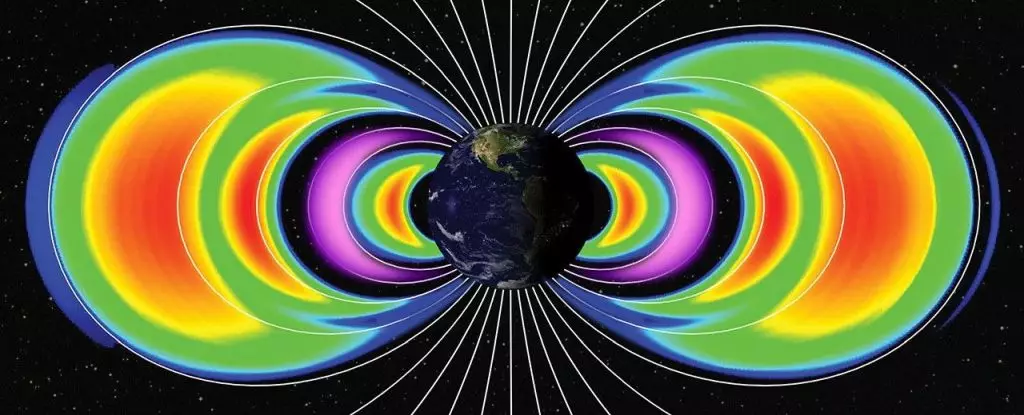In May 2024, an extraordinary solar storm unleashed a ferocious onslaught of solar particles that resonated across the Earth’s atmosphere, extending its influence to the deepest oceanic crevices. This cosmic event was triggered by a series of intense solar flares and coronal mass ejections from the Sun, leading to a cascade of phenomena that underscored the dynamic relationship between solar activity and Earth’s magnetic environment. While such solar storms are not uncommon, the magnitude and aftermath of this particular storm have opened new avenues for scientific inquiry into the nature of Earth’s radiation belts.
The most startling revelation following the May storm was the emergence of two temporary radiation belts surrounding Earth. Traditionally, Earth’s radiation environment comprises the well-known Van Allen belts, which act as a sort of protective barrier against harmful cosmic rays and solar particles. However, the storm introduced a novel layer of high-energy particles, particularly energetic protons—a first in our research legacy.
Previous observations had confirmed the existence of temporary radiation belts following solar storms, often made up of electrons. Yet, the inclusion of high-energy protons in one of these newly formed belts has prompted physicists to re-evaluate existing models of particle trapping in our planet’s magnetic field. According to physicist Xinlin Li, the findings have challenged conventional wisdom and demonstrated that our understanding of these belts is still evolving.
Interestingly, the stability of these newly formed belts has defied expectations. While temporary radiation belts have typically dissipated within weeks, these new structures exhibited unprecedented persistence, lasting for a remarkable three months following the storm. As noted by astronomer David Sibeck, this unusual durability raises questions about the mechanisms at play. Ongoing solar activity, including subsequent storms in June and August 2024, did manage to disrupt the belts, but some remnants persisted, suggesting that the presence of energetic protons might lead to enduring changes in Earth’s radiation environment.
The longevity of these belts poses an intriguing dilemma for scientists. The implications are two-fold: on one hand, the extended existence of high-energy particles can provide critical insight into solar-terrestrial interactions; on the other, they present potential risks to satellites and other space-faring technologies. Understanding how and why these new belts remain in existence is vital for predicting their impact on our technology-heavy civilization.
The discovery of energetic protons trapped within a radiation belt has significant ramifications for space weather research and our understanding of solar phenomena. High-energy particles in Earth’s magnetosphere can lead to a range of effects, including disruptions to satellite operations and even potential threats to astronauts in orbit. By studying the newly formed belts, scientists can ascertain how solar storms influence particle densities over time, which could, in turn, assist in crafting advanced prediction models.
Moreover, the existence of these new radiation belts challenges existing paradigms related to planetary magnetic fields and their interactions with solar wind. By integrating this new data into current theories, researchers can enhance their models, leading to better preparedness for future solar events. As our reliance on satellite technology increases, understanding the risks posed by cosmic weather events will be essential for maintaining global communication and navigation systems.
As the scientific community continues to analyze the findings from the May 2024 solar storm, it becomes increasingly clear that the study of Earth’s radiation environment is a field that is continuously evolving. Understanding the intricate dynamics between solar activity, magnetic fields, and particle interactions will help pave the way for innovations in space weather forecasting.
Ultimately, the May 2024 storm serves as a powerful reminder of the complexities of our solar system and the profound impact solar phenomena can have on Earth. Continuous research is essential to unravel the mysteries of our cosmic neighborhood and enhance our preparedness for the future.


Leave a Reply